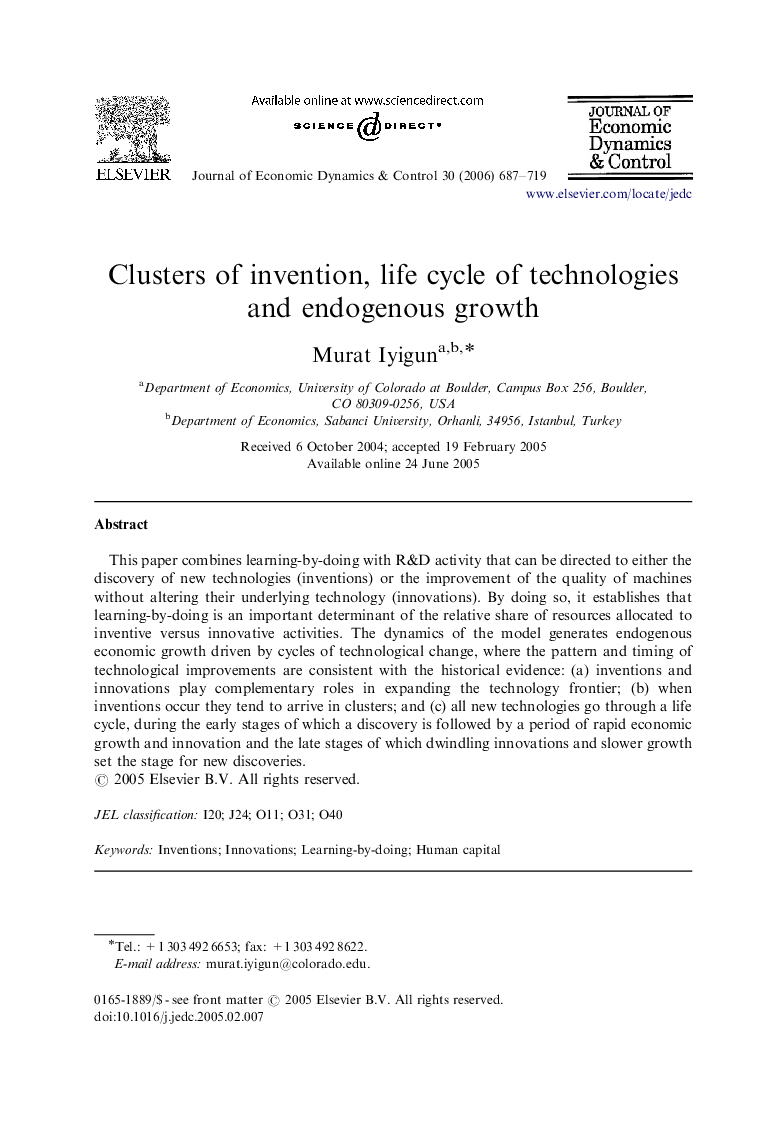| Article ID | Journal | Published Year | Pages | File Type |
|---|---|---|---|---|
| 5100008 | Journal of Economic Dynamics and Control | 2006 | 33 Pages |
Abstract
This paper combines learning-by-doing with R&D activity that can be directed to either the discovery of new technologies (inventions) or the improvement of the quality of machines without altering their underlying technology (innovations). By doing so, it establishes that learning-by-doing is an important determinant of the relative share of resources allocated to inventive versus innovative activities. The dynamics of the model generates endogenous economic growth driven by cycles of technological change, where the pattern and timing of technological improvements are consistent with the historical evidence: (a) inventions and innovations play complementary roles in expanding the technology frontier; (b) when inventions occur they tend to arrive in clusters; and (c) all new technologies go through a life cycle, during the early stages of which a discovery is followed by a period of rapid economic growth and innovation and the late stages of which dwindling innovations and slower growth set the stage for new discoveries.
Related Topics
Physical Sciences and Engineering
Mathematics
Control and Optimization
Authors
Murat Iyigun,
